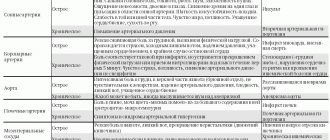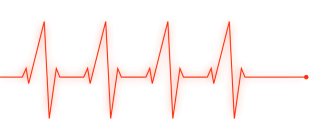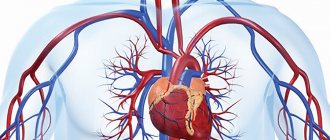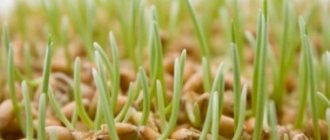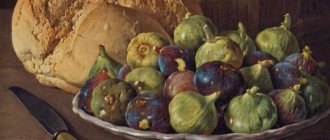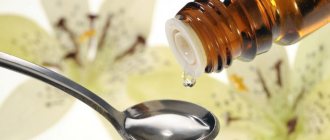Treatment of cardiac arrhythmia with folk remedies
Do not panic if your doctor has diagnosed you with atrial fibrillation, because there are treatment methods with folk remedies. It can be:
- viburnum decoction;
- hawthorn tincture;
- calendula infusion;
- decoction of valerian root;
- lemon balm tincture;
- grated celery;
- grated onion with apple.
- Treatment of cardiac arrhythmia in men with folk remedies
How to cure cardiac arrhythmia with folk remedies in a man? It's very simple: mix alcohol tinctures of valerian, hawthorn and motherwort. Infuse for 24 hours, take one spoon three times a day.
- Treatment of cardiac arrhythmia in women with folk remedies
If you are interested in folk remedies for atrial fibrillation in women, we recommend trying the following recipe: cut 0.5 kilograms of lemons, pour honey and add 20 apricot kernels. This drink is taken one tablespoon 2 times a day.
Buy viburnum (dried berries) on our website
Folk remedies that strengthen the heart
You can strengthen the cardiac muscle, heart and blood vessels with such folk remedies as:
- infusion of dill and parsley;
- hawthorn infusion;
- motherwort tincture;
- honey syrup with garlic;
- ground walnuts.
Advice! For the best effect, use decoctions of lemon balm, St. John's wort, and thyme.
If you add up the length of all the capillaries in the body of an adult, you get a figure of 100 thousand kilometers! This thread can be wrapped twice around our planet along the equator. How to keep such a large system healthy? How can you help your heart withstand daily stress so that it can work all your life “without failure”? There are several recommendations for completing this task.
Cardio loads
The most beneficial exercise for your heart is vigorous walking. It rejuvenates blood vessels, accelerates blood circulation, and helps the heart muscle work fully. Most centenarians walk daily, and many cover impressive distances.
Unlike running, walking does not put shock on your joints and does not dramatically increase your heart rate. And by combining active walking with a walk in the fresh air, you thereby receive double benefits: the functioning of the respiratory system and the condition of the skin improves.
So, 10 thousand steps is the minimum with which you can compensate for a sedentary lifestyle in the modern world. Anyone who wants to improve their health and achieve active longevity can safely double this figure.
Nutrition for the Heart
In addition to factors beyond human control (ecology, hereditary and genetic predisposition), nutrition has a significant influence on heart function, which has been confirmed by research.
Recommendations for water consumption are as follows: 1.5 - 2 liters per day. However, if there are signs of heart failure (edema), you should try to drink no more than 1-1.2 liters of liquid per day (including soups, jelly, etc.). You also can’t drink less, otherwise it will be difficult to remove nitrogenous metabolic products, and weakness and constipation may appear. It is necessary to limit salt intake to avoid swelling and increased blood pressure, the norm is no more than 5g per day. Also limit your sugar intake, give up fatty foods, exclude rich broths, fried and smoked meat, and spicy foods. Periodically carry out fasting days (for example, consume 300 g of cottage cheese, 500 g of apples, 400 ml of kefir, 200 g of boiled potatoes throughout the day in 5 doses).
What is good for the heart? First of all, foods rich in potassium and magnesium, omega acids and antioxidants:
- Fish . At least twice a week, you should include fatty fish in your diet - salmon, mackerel, sardine, rich in polyunsaturated omega fatty acids. the most valuable foods for the heart.
- Vegetable oils. Contains vitamin E and antioxidants. Pork lard fats are useful in that they strengthen the functioning of the heart without contributing to the development of atherosclerosis (fatty pork meat, on the contrary, is harmful to the heart).
- Carrot. Rich source of vitamins (A, E, K), folic acid and potassium.
- Nuts (walnuts, hazelnuts, almonds, pine, pistachios) . They help lower cholesterol levels (unless, of course, you eat them by the handful), contain monounsaturated fats and vitamin E. Reduce the risk of heart attack by 30-50%.
- Apples . It is generally difficult to overestimate their importance. Contains vitamins and antioxidants.
- Bananas. As a source of potassium and a significant amount of magnesium, they help reduce blood pressure and normalize the functioning of the nervous system, normalize the content of hemoglobin in the blood and the circulatory process. Also useful for the content of potassium, carotenes and vitamin A for the heart are lemon, persimmon, and pumpkin, which can strengthen and normalize the functioning of the heart muscle.
- Pomegranate is one of the most valuable fruits for strengthening and supporting the condition of the heart and blood vessels. Its consumption prevents the development of atherosclerosis, maintains blood flow levels and oxygen saturation of the heart.
- Flax-seed. Rich source of alpha-linoleic acid. Helps lower cholesterol levels.
- Garlic . It also lowers cholesterol and also thins the blood, lowering its viscosity.
- Legumes . Rich in protein, which is so necessary for the normal functioning of the heart muscle.
- Dried fruits. And especially dried apricots. It has a lot of potassium and antioxidants. To strengthen and restore the cardiovascular system, it is advisable to use Amosov’s (Russian cardiologist) paste, which is a crushed mixture of nuts and dried fruits. It is also very useful to eat 20-30 grams of dark chocolate per day.
- Tomatoes . Helps normalize heart rhythm.
Exercise "Birch"
This exercise, sustained for 2-3 minutes, can replace cardio training. What are the benefits of "Berezka":
- Improves blood circulation.
- Rest for the heart muscle. In this position, the heart receives both a useful load and the opportunity to relax.
- Prevention of varicose veins. And this is also part of the beneficial effect on the cardiovascular system as a whole.
- Normalization of the functioning of the kidneys, intestines and thyroid gland (if you press your chin to your chest and breathe evenly, calmly). The normal functioning of the entire body as a whole, including the heart, depends on the health of these organs.
- Deep relaxation. “Berezka” helps relieve fatigue, get rid of stress, and “clear your head.” And thereby help your heart.
Lymphatic drainage exercises
Pay attention to lymphatic drainage exercises every day!
Healthy capillaries mean a healthy heart. And in order to improve their work, you need to take a break from other things for just 1-3 minutes! For example, heel pushes using the Mikulin (Soviet academician) technique will take you 30-60 seconds maximum. You just need to lift your heels 5 cm from the floor from a standing position and sharply lower them down. Repeat 30-60 times. When working sedentarily, it is recommended to do this exercise every 1-2 hours.
And the “Vibration” exercise will take you 1-3 minutes. To do this, just lie down, raise your arms and legs up and shake them randomly.
5. Calm, just calm
This is the most difficult point. How can we maintain balance in our time and not be influenced by negative circumstances and aggressive people? Our heart will respond one way or another because we are not robots. Where to start - learn to relax physically (Director of the Franklin Method Institute in Switzerland - Eric Franklin):
1.Imagine that you are standing under a waterfall. The water flows around your neck, shoulders and back. All tension is washed away.
2 Shoulder Relaxation: Raise your shoulders up, and now lower them down very slowly. Raise your shoulders up again. Now allow your shoulders to fall down under the force of the Earth's gravity, exhaling loudly with the sound "Ahh." Repeat, etc.
3. Patting Where do you feel muscle tension? Let's clap there. This technique helps improve blood circulation and relax muscles.
4. Shake your arms and legs at different intensities to relax your muscles.
A healthy sense of humor also helps cope with stress. Its development is facilitated by communication with positive people, high-quality literature with good humor (Dovlatov, Twain, Chekhov, etc.).
Attention! Any exercises or techniques may have contraindications! Consult with specialists! Take care of your heart, because you only have one!
Folk remedies for heart pain
Already tired of discomfort in the chest area? Folk remedies will help treat heart pain:
- viburnum berries;
- decoction of oats and flaxseed;
- hawthorn and sweet clover decoction;
- bearberry, milk thistle;
- dandelion root.
Also effective for heart pain: asparagus, valerian, plantain, calamus root, anise, St. John's wort, calendula.
You can find these and other herbal remedies that help improve our muscle life in the FitoContinent online store. Rich resources of natural medicine are at your disposal at affordable prices!
Buy calendula (flowers) on our website
Review
Symptoms of pancreatic diseases
In addition to acute and chronic forms of pancreatitis, there is pancreatic cancer, which is one of the most aggressive types of oncology. Each disease has characteristic symptoms, the appearance of which should be a direct signal for a comprehensive examination and consultation with a gastroenterologist, endocrinologist and oncologist. In the acute course of pancreatitis, a person is faced with a set of clinical symptoms:
- Severe pain in the left hypochondrium, which can radiate to the side, left side of the back, shoulder, have a girdling nature, or be localized in the left side of the chest.
- Nausea and vomiting that does not bring relief.
- Paleness of the skin.
- Dry mouth.
- Cardiopalmus.
An attack of acute pancreatitis is potentially life-threatening, so if characteristic symptoms appear, it is necessary to call an ambulance. The chronic form of inflammatory damage to the pancreas is characterized by a set of clinical signs:
- Stool disorders in the form of diarrhea that occurs after eating.
- Not pronounced, but periodically occurring pain in the left hypochondrium.
- Nausea and discomfort in the epigastric region after eating spicy or fatty foods, as well as alcohol.
- The feces acquire a heterogeneous consistency, and particles of undigested food may be visible.
- Loss of body weight, partial loss of appetite.
The danger of chronic pancreatitis lies not only in the fact that this process disrupts the entire process of digestion, but also in the fact that a chronic inflammatory process can develop into an acute one at any time. Pancreatic cancer is accompanied by a set of general and type-specific symptoms. Warning signs indicating the development of pancreatic cancer include:
- Pain in the middle part of the abdomen.
- Complete or partial loss of appetite.
- Skin itching.
- Yellowing of the skin.
- Increased gas formation in the intestines, chronic constipation, diarrhea, nausea and vomiting.
- Sudden causeless loss of body weight.
- Increased blood glucose levels.
The described clinical picture can be supplemented by general weakness, malaise, and when performing an ultrasound examination of the abdominal organs, an increase in the size of the liver and gall bladder is observed.
Symptoms of pancreatitis and acute gastritis may be similar. Unlike pancreatitis, with acute gastritis, vomiting brings relief, and abdominal pain is localized in one area and is not girdling. If we talk about how to distinguish gastritis from pancreatitis in the absence of specific symptoms, then only a comprehensive examination and consultation with a gastroenterologist will help in this matter.
